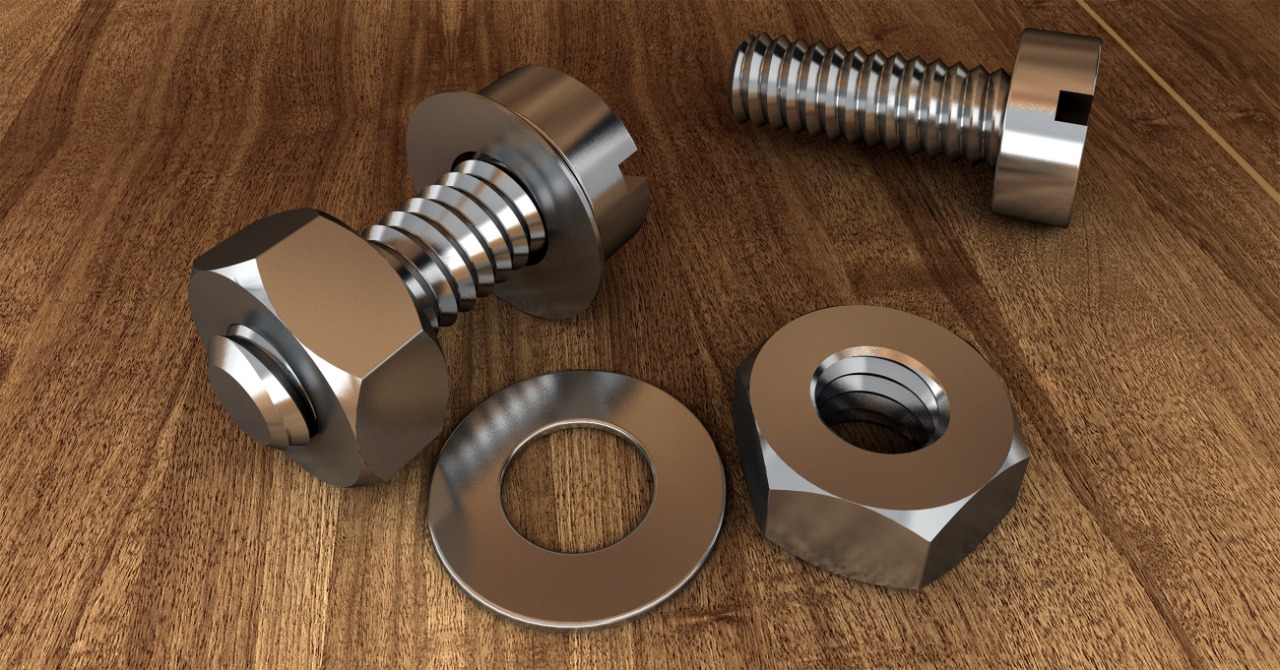Nut Bolts, Anchor Bolts, U Bolt
STAINLESS STEEL FASTENERS
AISI 302, 304, 304L, 316, 316L, 310,317, 317L, 321,347, 410,420,904L

As a result of its stability, strength, anti-corrosive, and high heat qualities, stainless steel is one of the most often used materials for fasteners. A flexible, affordable alloy is produced when outstanding anti-corrosion and heat-resistance qualities are combined with steel's strength. There are three primary grades of stainless steel: austenitic (300 series), martensitic, and duplex. Due to its ease of cleaning and resistance to corrosion, the 300 series of stainless steel is the most popular and is used in sanitary applications. Duplex alloys outperform other alloys in terms of strength and corrosion resistance.
The following are regular uses for stainless steel fasteners;
- Components that are exposed to corrosive conditions such as chemicals, seawater, or other substances.
- High wear components
- Sanitary equipment
- Components that experience a lot of heat and stress
- Components that need to be exceptionally strong and stable.
♦Fasteners Type- Nuts and Bolts
One of the most popular types of industrial fasteners is the nut and bolt. They support the union of two or more components by cooperating. The nut is tightened on one end of the bolt after it has been inserted through the bolt holes between the parts. As noted below, there are several varieties of nuts and bolts.
Nuts are usually used with a corresponding bolt and have internal threads. The most well-liked varieties of nuts are:
- Hex Nut - The most popular type of nut.
- Coupling Nuts - Plumbing pipe installation frequently involves coupling nuts.
- Lock Nuts - Locknuts are specially designed fasteners to prevent loosening due to vibrations.
- Square Nuts - The earliest variety of nuts with four sides are square nuts, which have a square shape.
- Flange Nuts - Nuts with a broad, serrated flange on one end are called flange nuts.
- Wing Nuts - Because they have two protruding portions, wing nuts are readily released or tightened with just the hands and no tools.
- Slotted Nuts - With the use of a cotter pin, pieces of slotted nuts are cut out to produce a locking mechanism.
- U-Nuts- Constructed from a single piece of rolled thread, U-nuts are dependable and robust. They are employed to join metal sheet panels.
- Speed Nuts - Speed nuts consist of two interlocking metal components.
- Push Nuts - Push nuts to make it simple to disperse loads, which lowers surface stresses.
- Jam Nuts - Half as tall as hex nuts, jam nuts are small in size.
- Axle nuts - - Sometimes referred to as cap nuts or dome nuts, conceal the edges of the bolts and give the assembly a smooth look.
- Castle Nuts - To secure the nut's position, a pin can be put through a notch on one end of a castle nut.
♦Fastners Type - U Bolts
U-bolts are shaped like the letter “U” and have screw heads on both ends. The U-bent bolt's portion is unthreaded. They are widely used in plumbing, HVAC, and piping projects to hold pipes and tubes in place without drilling holes in them.
U-bolts are a construction "jack of all trades." It is a multipurpose fastener that is used for motor and engine shaft components, pipe and conduit holders, and foundation and roof structures.
U-bolts are essential to the overall stability of spring operation because they provide the clamping force needed to tightly bind the leaf spring, top plate, axle seat, axle, and bottom plate together.
Due to their unique form, these bolts are also perfect for keeping objects in place that would otherwise be challenging to adhere to a certain surface.
U-bolts are available in a range of sizes and coatings to support a range of loads. Round bend, square bend, and forged top are the three primary types of bends used on U-bolts, depending on the suspension design and the geometry of the mating components.
- Round Bend
Round bend There are several industrial uses for U-bolts. Typically, they fasten a steel post or fixture with a pipe or round bar connection. U-bolts are used as anchor bolts in concrete. Round bend U-bolts are also used with leaf spring installations on trucks and trailers.
- Semi-Round Bend
While semi-round U-bolts have a small arch, round U-bolts have a nearly flawless semi-circle form. The usage of semi-round bends is common in spring-loaded and automotive applications.
- Square Bend
Straight bend U-bolts clamp or secure square or rectangular objects to structures made of box section members. Metal channels and ducting may be suspended using this square bend design. They can also secure large gear or anchor in the concrete.
- Forged Top
For specialised uses, there are more variations. These have been created in square, circular, or semi-round shapes. Each of these bent types also makes use of advanced materials. Forged tops are typically utilised when there has to be more space between the U-bolts and, for instance, the frame.
♦Fasteners Type Anchor Bolt
Concrete buildings are joined together by anchor bolts. Anchor bolts are frequently used in the fabrication sector to secure machinery, structural skids, and vessels to concrete. The exposed threaded end of the anchor bolt meshes with the equipment while the other end is embedded in the concrete. There are several kinds. The L-shaped stud, double-end rods with plates, welded-headed studs, and swedge type are a few of the popular ones. The specifics of each type of anchor bolt, the selection procedure, and the accountable parties engaged in the installation are covered in this article.
Bent-bar Anchor Bolts
These steel rods have hooks twisted out of one end and threads on the other. These hooks screw into masonry or concrete. They are available in two forms: L shapes and J shapes. Signposts, poles, and other steel constructions frequently employ bent bars.
Double End Rods with Plate
These anchors come in the shape of rods with two ends and a plate washer on one. The plate is frequently welded to the anchor bolt or a nut set into the concrete. Plate bolts are frequently used in the construction of light poles, road signs, and building columns.
Headed Anchor Bolts
These bolts feature a square or hex-shaped, generally forged head on one end. The head penetrates the cement. They fall under the category of plate anchors if a metal plate is welded on either side of the bolt. Still considered headed anchor bolts, these plate anchors. These kinds of fasteners provide the surface with a pleasant appearance without the nut and bolt sticking out. They apply to a variety of construction applications such as bridge railing, light poles, etc.
Swedge Bolts
These fasteners are made of circular steel bars that are "swedged" on one end and threaded on the other. The term "swedge" refers to their many indentations, which provide them with a superior grip on the concrete. They are frequently used in the building of piers and girders.
EXPORT COUNTRIES
Ethiopia | South Africa | Ghana | Tanzania | Argentina | Bolivia | Brazil | Chile | Colombia | Ecuador | Guyana | Paraguay | Peru | Suriname | Uruguay | Venezuela
Our Products

Send us your enquiry today
We respond to all enquiries within 24 hours. Click on contact to send your requirement.
Contact us

